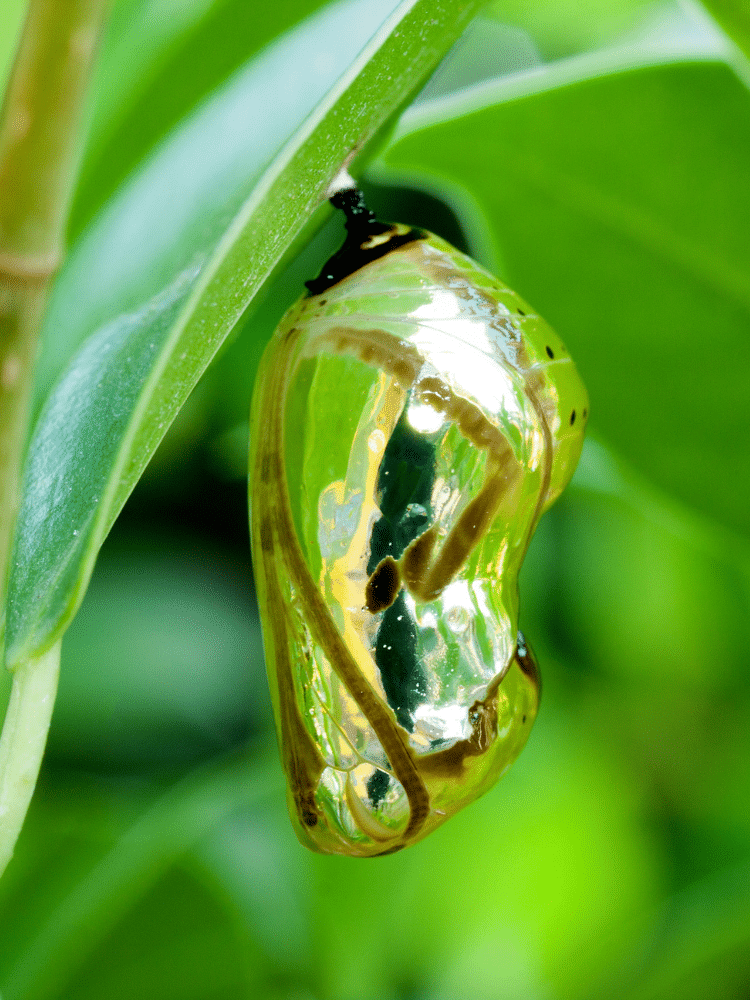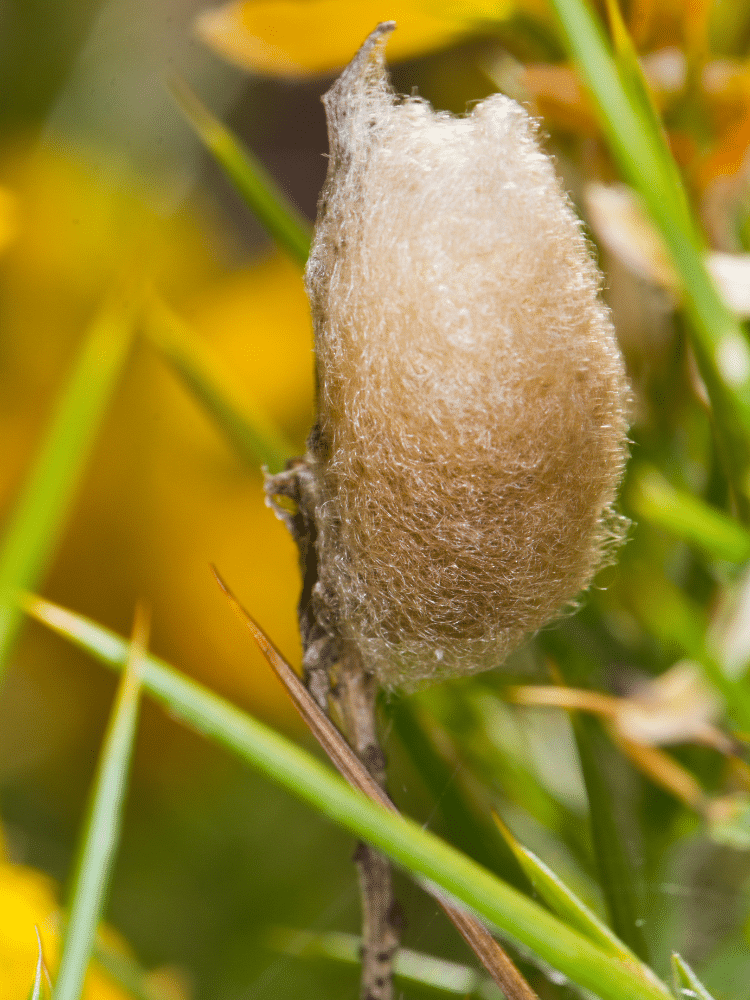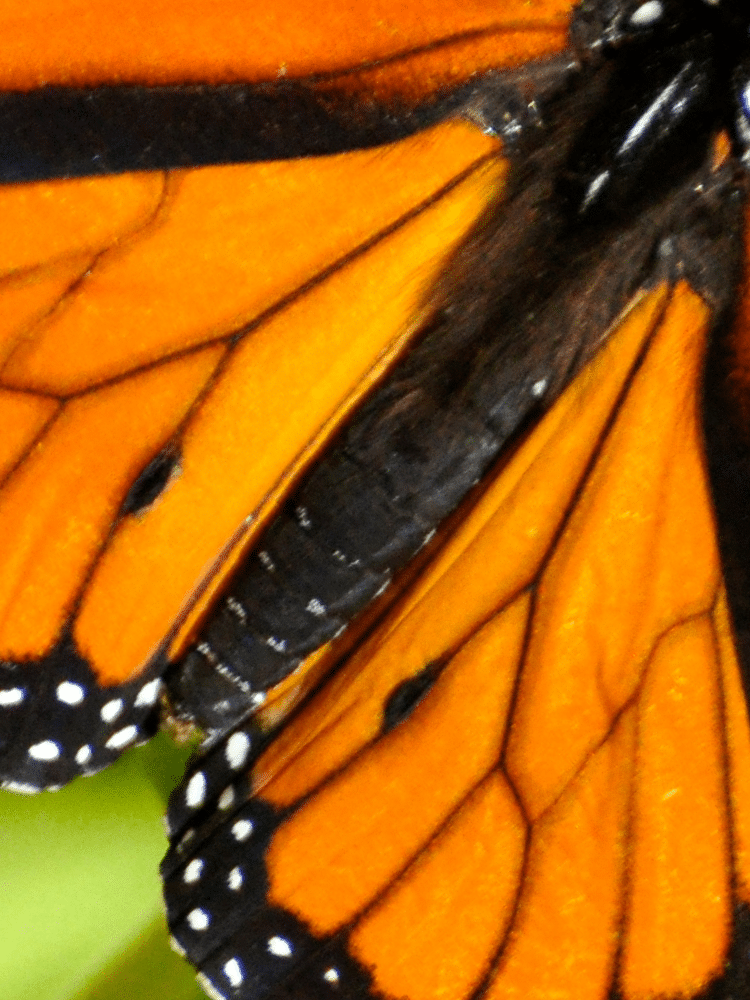Nature is full of wonders, and among its most mesmerizing spectacles is the transformation of caterpillars into moths or butterflies. But what distinguishes a cocoon from a chrysalis? Let’s compare a chrysalis vs cocoon.

Metamorphosis
Every butterfly or moth you’ve ever seen, from the majestic monarch to the elusive luna moth, began life as a tiny egg. From this humble start, a caterpillar emerges, driven by an insatiable hunger.
But then comes a moment of profound transformation.
The caterpillar seeks a safe spot, and its body begins to change in ways that have fascinated humans for centuries. Here, the paths of butterflies and moths diverge in their approach but converge in purpose.
The butterfly caterpillar’s body hardens into a chrysalis, a protective casing where it will undergo its metamorphosis. Moth caterpillars, on the other hand, often spin silken enclosures around themselves, creating cocoons that serve a similar protective function.
The caterpillar’s old body breaks down and a new creature forms.
After some time, when the transformation is complete, the adult moth or butterfly emerges, ready to take on the world with its newly formed wings.

What is a Chrysalis?
The chrysalis, often mistaken for a “cocoon,” is unique to butterflies. It’s a sight many of us are familiar with: a shimmering, jewel-like case, sometimes adorned with gold specks or intricate patterns.
But what exactly is a chrysalis, and why is it so crucial in a butterfly’s life?
A chrysalis is the pupal stage of butterflies. After the caterpillar has eaten its fill and grown to its full size, it finds a sheltered spot to begin its transformation. The caterpillar’s skin splits for the last time, revealing the chrysalis beneath.
This structure isn’t spun or constructed; it’s part of the caterpillar, formed from its outer layers.
The word “chrysalis” is derived from the Greek word “chrysos,” meaning “gold.” This name is apt for many chrysalises, which often have golden spots or a metallic sheen.

But it’s not just about aesthetics.
The chrysalis’s hard shell provides protection from predators, and its colors and patterns can act as camouflage, blending into the surroundings.
Inside this protective casing, the caterpillar undergoes a dramatic transformation. Its body dissolves, and the cells rearrange to form the butterfly. Depending on the species and environmental conditions, this process can take a few days to several weeks.
The chrysalis becomes transparent once the transformation is complete, revealing the butterfly within. The adult butterfly then breaks free, ready to stretch its wings and embark on the next phase of its life.
Built In Defence
Some chrysalises have developed an unexpected defense mechanism: they can produce sounds! When threatened by predators, certain butterfly pupae, like those of the swallowtail butterfly, can emit clicking noises.
What is a Cocoon?
While the chrysalis is the domain of butterflies, the cocoon is primarily associated with moths. These silken enclosures, often considered nature’s sleeping bags, play a pivotal role in the life cycle of many moth species.
A cocoon is crafted by the moth caterpillar using silk from glands near its mouth. This silk is incredibly strong and flexible, allowing the caterpillar to weave a protective barrier around itself.
Depending on the species, cocoons can be spun among leaves, buried underground, or even suspended from branches.

Unlike the chrysalis, a hardened part of the caterpillar itself, the cocoon is an external structure. Some moth caterpillars will even incorporate leaves, twigs, or other debris into their cocoons, enhancing camouflage and protection.
Inside the cocoon, the moth caterpillar transforms into a pupa. Much like the chrysalis for butterflies, this stage is a time of profound change. The caterpillar’s old body structures break down, and the adult moth forms in its place.
The duration of the pupal stage within the cocoon varies widely among moth species. Some moths emerge within weeks, while others might overwinter in their cocoons, waiting for the right conditions to appear.
When the time is right, the adult moth uses a particular enzyme to soften a portion of the cocoon. It then pushes out, often leaving behind a perfectly circular exit hole.
Differences Between Chrysalis and Cocoon
While cocoons and chrysalises serve as protective encasements during the pupal stage of moths and butterflies, they have distinct characteristics that set them apart. Here’s a closer look at their differences:
- Origin and Formation:
- Chrysalis: A direct transformation of the caterpillar’s body, the chrysalis is not an external structure that’s built. Instead, it forms from the caterpillar’s last exoskeleton, hardening to provide protection.
- Cocoon: Moth caterpillars spin cocoons using silk. It’s an external structure, often incorporating environmental materials for added camouflage and protection.
- Appearance and Texture:
- Chrysalis: Often smooth and shiny, chrysalises can have a variety of colors, sometimes even metallic hues. They’re typically more exposed and can be found hanging from plants or other structures.
- Cocoon: It is generally softer due to its silken construction, and it can be fuzzy or smooth. Their appearance is influenced by the materials the caterpillar incorporates, such as leaves or bark.
- Occupants:
- Chrysalis: Exclusively the domain of butterflies.
- Cocoon: Primarily associated with moths, though not all moths create cocoons.
- Location:
- Chrysalis: Often found attached to stems, leaves, or other surfaces, hanging vertically.
- Cocoon: Can be found in various locations, from buried underground to nestled among leaves or suspended from branches.
Understanding these differences aids in identifying and distinguishing between the pupal stages of moths and butterflies.
Similarities Between Chrysalis and Cocoon
While cocoons and chrysalises have distinct characteristics, they also share several similarities. Their primary function is as a protective structure during a critical phase of metamorphosis.
Here are some of the key similarities between these two natural marvels:
- Purpose of Protection: Both cocoons and chrysalises serve as protective barriers, shielding the vulnerable pupa from external threats. This protection is crucial as the insect transforms from a caterpillar to an adult.
- Camouflage and Concealment: Nature has designed both structures with camouflage in mind. Whether the chrysalis blends in with its surroundings or the cocoon incorporating external materials, both are adept at hiding in plain sight.
- Thermal Regulation: These protective structures also play a role in regulating temperature. They ensure that the pupa inside remains at an optimal temperature, safeguarding it from extreme weather conditions.
- Metamorphic Chamber: A biological miracle unfolds Inside the cocoon and chrysalis. The caterpillar’s body undergoes a complete transformation, reshaping and reforming into the adult insect.
- Natural Materials: Both structures are made of organic materials. While the chrysalis is formed from the caterpillar’s own body, the cocoon is woven from silk produced by the caterpillar.
- Vulnerability to Predators: Despite their protective nature, cocoons and chrysalises can prey on specific predators. Birds, rodents, and even insects have learned to breach these defenses for a nutritious meal.
- Significance in Life Cycle: The cocoon and chrysalis stages are pivotal moments in the life cycles of moths and butterflies, respectively. They bridge the gap between the larval and adult stages, ensuring the continuation of the species.
Understanding these shared functions and similarities offers a glimpse into nature’s intricate designs, revealing the delicate balance and interconnectedness of life’s many processes.






